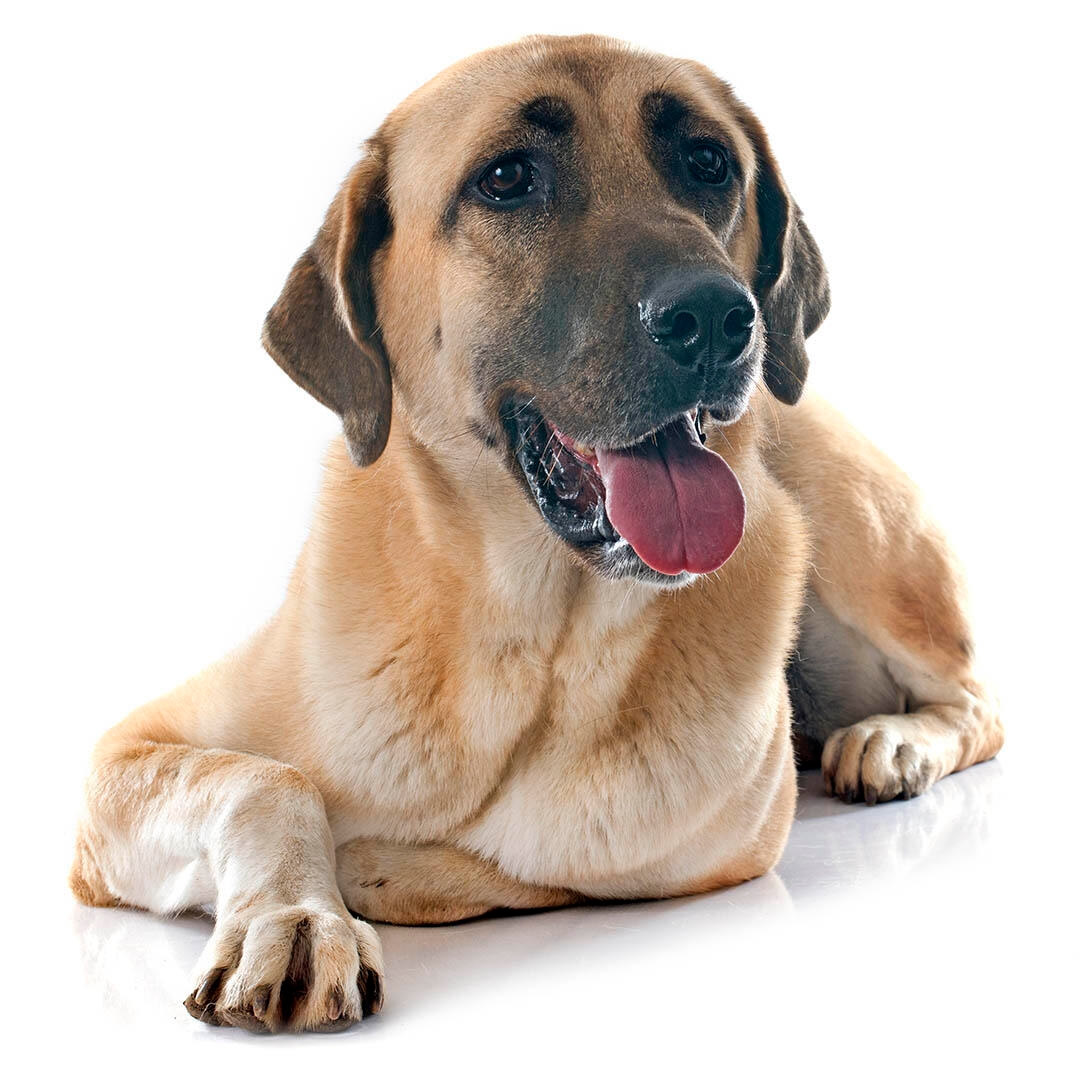
The first pair of Anatolian Shepherds arrived in the UK in 1965 and despite further dogs being brought to the UK since, the breed remains rare in this country.
The Anatolian dog breed is generally a very hardy breed, but dogs can suffer from:
- Hip dysplasia
- Gastric dilatation volvulus
- Entropion which is a painful eye condition where the eyelids roll inwards.
Priority Kennel Club health schemes and testing:
- Hip dysplasia screening
With family members and other people well known to them, the Anatolian Shepherd is loyal and friendly, however this breed retains their working nature, suspicious of strangers and very fast to react to any perceived threat. As a flock guardian breed, the Anatolian is an independent thinker, relied upon to make decisions by themselves rather than at the cue of a shepherd, in the pet home this can mean they are not easy to live with and require a great degree of careful management.
The first pair of Anatolian Shepherds arrived in the UK in 1965 and despite further dogs being brought to the UK since, the breed remains rare in this country.
| Family-friendly: | 3/5 |
| Exercise needs: | 3/5 |
| Easy to train: | 4/5 |
| Tolerates being alone: | 3/5 |
| Likes other pets: | 2/5 |
| Energy level: | 3/5 |
| Grooming needs: | 3/5 |
| Shedding: | 2/5 |
The Anatolian Shepherd is an ancient breed descended from mastiff types and flock guardian breeds of the Middle East. Giant in size and athletic, this powerful dog was bred to protect flocks of sheep and goats from predatory bears and wolves and of course, human thieves.
They are the original livestock guardian dogs of Turkey, and are still seen working with the nomads who move to find food and other resources, a process called ‘transhumance’ which is responsible for the spread of both human and canine genetics across some parts of the world.
The first pair of Anatolian Shepherds arrived in the UK in 1965 and despite further dogs being brought to the UK since, the breed remains rare in this country.
Best suited to someone living remotely and rurally, who does not have frequent visitors and has a large and extremely secure property. Ideally a person whose job means the dog can be with them most of the time, and yet doesn’t come into contact with strangers or unknown dogs.
Up to two hours a day, split into two walks, will keep the Anatolian happy, but further time should be dedicated to interactive training and puzzle solving games that involve working with their owner. Some off lead running will be beneficial but given this breeds size, fitness should be built up slowly until they reach maturity. Given their suspicion of strangers - human and canine - use a safe secure, isolated ideally private, place for off lead exercise!
This is a giant breed and will require sizeable housing and a large, extremely securely fenced garden. If the garden borders other properties or public rights of way, double fencing is advisable along with delivery boxes situated on the outsides of the property. Better suited to remote rural living with access to secure areas for exercise and training.
Giant-breed dogs, as well as having giant appetites, benefit from a different balance of minerals and vitamins, supporting different joint and cartilage needs. The Anatolian Shepherd dog breed is prone to bloating and stomach problems; try feeding smaller, more frequent meals to help minimise the risk.
The coat offered protection to the Turkish flock guards in the coldest of winters and hottest of summers. Short and dense with a thick undercoat, it needs a brush through once or twice a week and will shed heavily during the moulting seasons.
Not a breed that will enjoy training for its own sake, the Anatolian must be socialised very thoroughly when young, to livestock, children, other humans and other household pets but even then will retain their guarding instincts and stranger suspicion. A solid recall should be taught and refreshed regularly, as should walking on a harness and lead, and all training must be done using positive reinforcement – this is not a dog to attempt to bully or intimidate, such methods will backfire dangerously!
Due to their size, protective instincts and the time needed for training and exercise, this is a dog suited to adult only homes. Because this breeds nature is to distrust strangers, homes with many visitors or visiting children are likely to find the Anatolian Shepherd highly unsuitable.
While many dogs are traditionally thought of as being good with children, all dogs and children need to be taught to get on with and respect each other, and be safe together. Even so, dogs and young children should never be left alone together and adults should supervise all interactions between them.
The Anatolian Shepherd dog has never been known by that name in its native Turkey. There they are the Kangal, Karabash (black face) and Akbash (white face), depending on colour and which area of Turkey they are from. Each area of Turkey has its own favourite and the arguments regarding which is best can get heated!